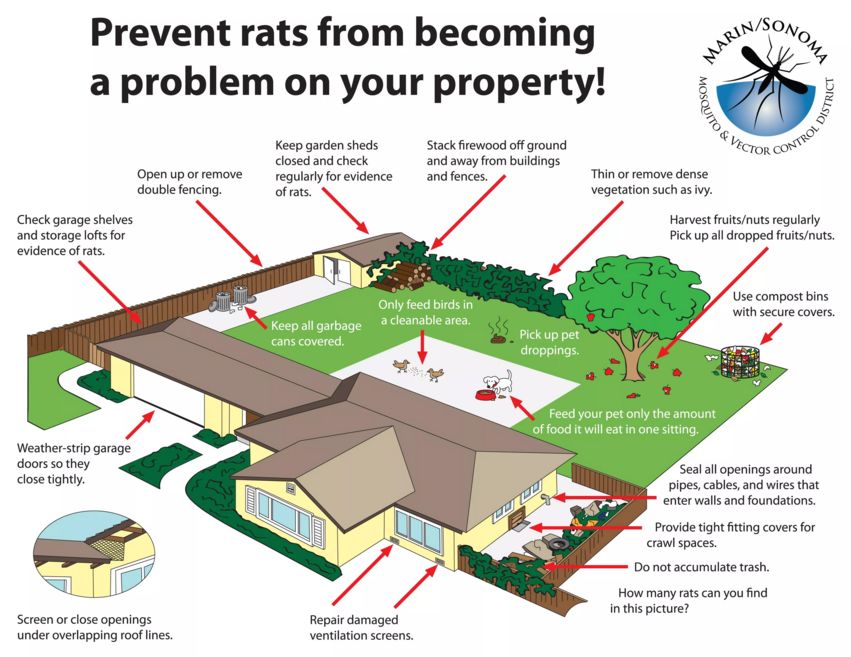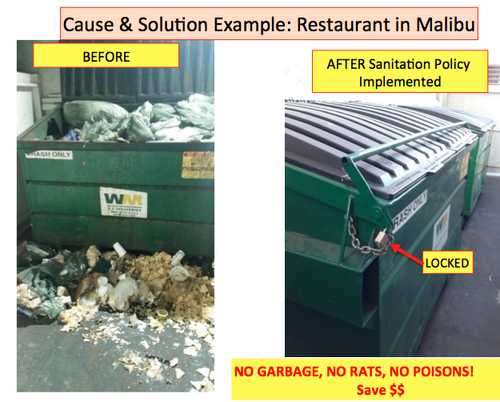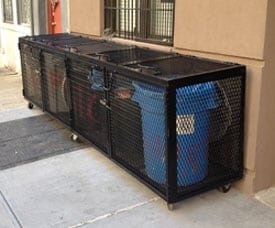
What You Can Do - Humane Rodent Control
Rodents thrive in human populated environments and destructive infestations often must be controlled but non toxic methods requires multiple strategies and patience to be successful. While attracting natural predators can be the most attractive and sustainable method of rodent control, some things should be considered before installing Owl and Kestrel boxes.
Some methods for a practical approach to rodent control as outlined in Non-Toxic Rodent Control by the Hungry Owl Project include:
Deterrents
Humane Exclusion
Animal Tracking
Removal of Attractants
Exclusion and Prevention
The most important steps to natural rodent control for homes, businesses and storage is exclusion and prevention. Removing any food and nest sources such as exposed trash bins, dense vegetation, and other examples illustrated below. Thoroughly inspecting for and sealing off any entry points for rodents should always be prioritized or the structure will continue to experience rodent infestations. There are various kinds of materials available that can be used on different substrates to prevent rodents from re-entering structures and causing further damage.
Successfully identifying all possible entry points and excluding your home of a rodent infestation can be overwhelming, and there are plenty of professionals that can help. Some offer non-toxic heat treatments to flush the vermin out of the walls of a structure before sealing up the entry points. Here is a list of some environmentally friendly companies that provide rodent and pest control services. Another one that is local to our community that we know about is Spectrum Environmental Pest but if you search for exclusion services and environmentally friendly pest control you are likely to find some local results wherever you are based. Sealing up entry points should be done before and immediately after this process in order to be effective.
Trapping and Research
Once the rodents have been removed, excluded and prevented from re-entering your home it is important to be diligent about keeping areas clean, continually checking for droppings and setting traps. Old fashioned snap traps are effective if you keep them clean and change bait regularly. Electronic zap traps are also effective when kept clean and refreshed with bait regularly.
Luckily with the growing knowledge about the lethal effects of rodenticides on wildlife and our ecosystem there is also a growing demand for effective non-toxic alternatives which means there are constantly new products being introduced to the market and new studies being conducted about rodenticides. Here are just a few innovations in rodent control technology
In 2017 our Organization participated in a Raptor Pilot Study for Levee Protection conducted by the Ventura County Public Works which has finally provided us with quantitative evidence that proves natural predators are a more effective at controlling rodent populations than bait boxes.
Be An Advocate and Work Together
Rodent problems are a community issue. While using bait boxes may seem like a convenient solution because it involves little effort on our part, “convenience” at the expense of our environment is really not convenient at all. Unfortunately most people are uninformed about rodenticides and the harm they cause. Large businesses, hotels, markets, malls, schools, restaurants and HOAs almost all use rodenticides and a lot of times management is under the false impression that using bait boxes is standard practice for industry with no real alternatives. It is our hope that the more people become informed of the truth about rodenticides that more people will take action, become advocates and raise awareness. If you notice that a local business is using bait boxes consider writing a letter like this example courtesy of Poison Free Malibu who is also a fantastic resource for information about rodenticides.
Aside from being toxic to wildlife, pets and our shared environment, the use of rodenticides also creates an expensive dependency on pest control companies to continuously keep bait boxes filled with poison. Any alternative method will save a significant amount of money which will be an attractive talking point when trying to persuade a business to stop using bait boxes. Sometimes identifying and correcting the main attractor / problem can be an easy solution. Poison Free Malibu reported on the case of Pepperdine University that was spending $29,940 annually with the use of bait boxes provided by a pest control company, and saved $14,940 after transitioning to natural methods bringing their annual cost of pest control down to $15,000.
Making the transition from using rodenticides to natural pest control can take effort and be time consuming but by remaining patient and persistent and sometimes working with your local officials you can bring about awareness and positive change to your community for generations to come.
Finally - Beneficial Predators
Once you have eliminated and excluded rodents from your home, cleared the premises of any bait boxes and make sure none of your neighbors are using rodenticides, you can install raptor perches and Barn Owl boxes to attract these natural predators to do what they are naturally born to do! A family of Barn Owls (from a single nesting box) can consume 3,000 to as many as 5,000 rodents in a single 4 month breeding cycle. One adult Barn Owl can consume 500 Gophers a year. They prey on Gophers, Rats, Mice, Rats, Voles, Moles and more. Barn Owls are cavity nesters and are easy to attract to a location by installing nest boxes.







